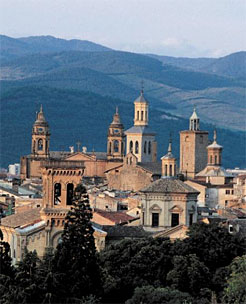
At various points along the Camino this past September, Lisa and I would look at each other and say: "It's time to unburden." We'd slither out of our backpacks, stretch our spines, and sit down. We'd unlace boots, shed socks, and let the breezes blow through our blisters.
Pilgrimage is a process of unburdening. It begins before you even leave home: with packing. I remember the initial unburdening. On the bedroom floor, I laid out everything I thought I'd need. I regarded each item: How much do I need you? Enough to carry you across the top of Spain? It was an unburdening.
Then I loaded everything up into the backpack and shouldered it: Could I haul this for a day's hike? And for the next day? And the next? Another unburdening.
Even along the trail, I left tiny altars of suddenly superfluous stuff. What had seemed so essential back home on the bedroom floor, had now become dead weight. I shed them like a snake molts dead skin.
By the end of the pilgrimage, I knew what to carry -- and what not. I didn't need to carry food: there were cafes and tiendas along the way. I didn't need to carry water: there were fountains in abundance. By the end of the journey -- and only by the end, we knew exactly what we needed.
I wish it were as easy to unburden a house as a backpack. I'm selling mine and moving from California to Minnesota. I've been unburdening my house.
The process of moving requires a discernment similar to packing a backpack. For weeks I've been lining up things and asking similar questions: How much do I need you? Enough to carry you across the country? Then follows an unburdening.
A graphic Lisa used in an earlier post haunts me: someone carries a house on her back -- instead of a backpack. I know I can't take it all with me. And I don't want to. If I take all the baggage from the old lives, there won't be any room for a new one. So I've been unburdening: furniture and photos, memorabilia and that most precious possession to a writer, books! It's hard; it's exhausting; it's evokes a spectrum of emotion. And it's the necessary askesis of change.
I know that by the end of the trip -- and only then -- will I know what I need. I only have to set out with what it takes to get me going.
The photo above is probably a good visual mantra for the journey. One needs water to survive, but often you don't have to carry it. There are fountains in abundance.
And look how lightly I carry that pack.



